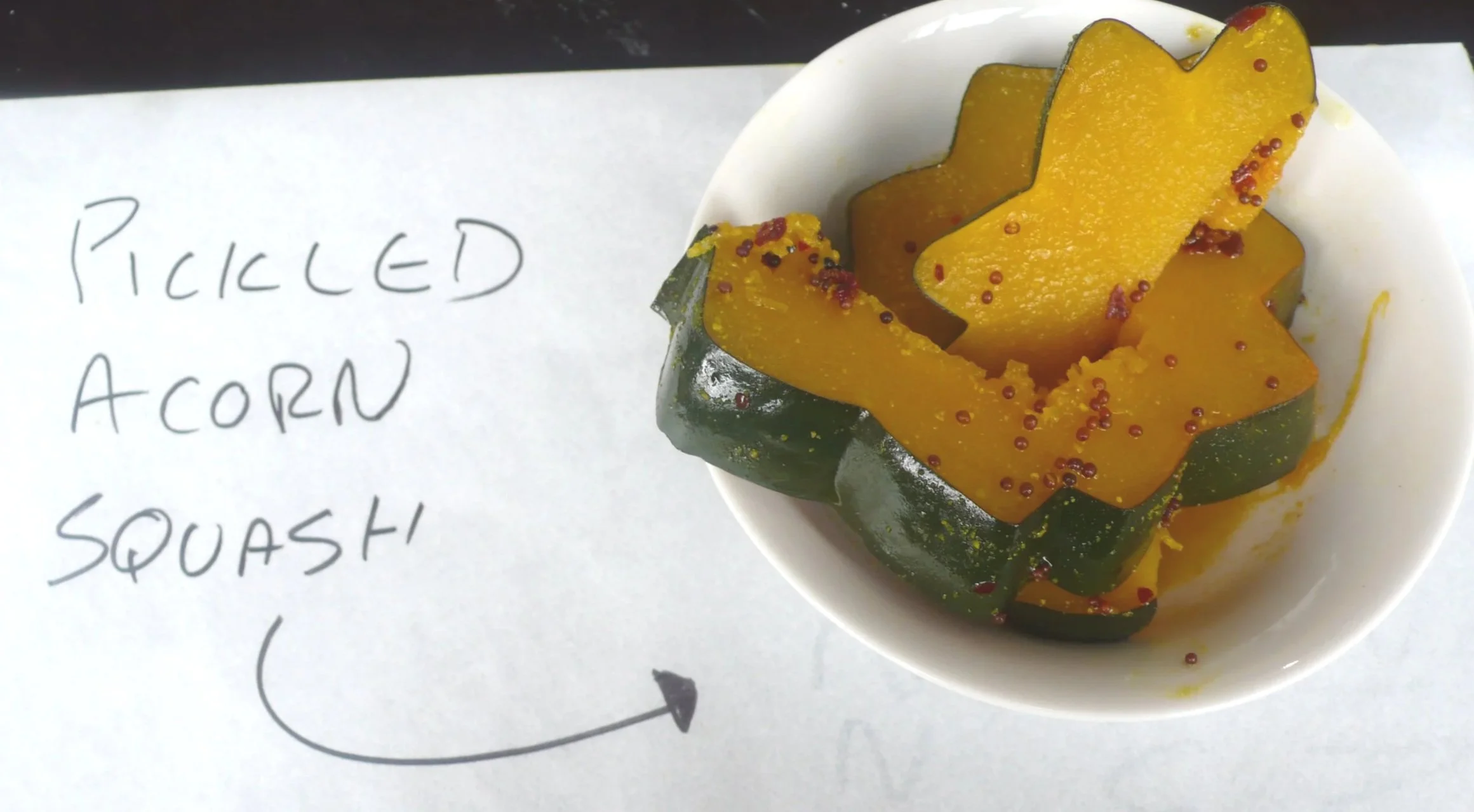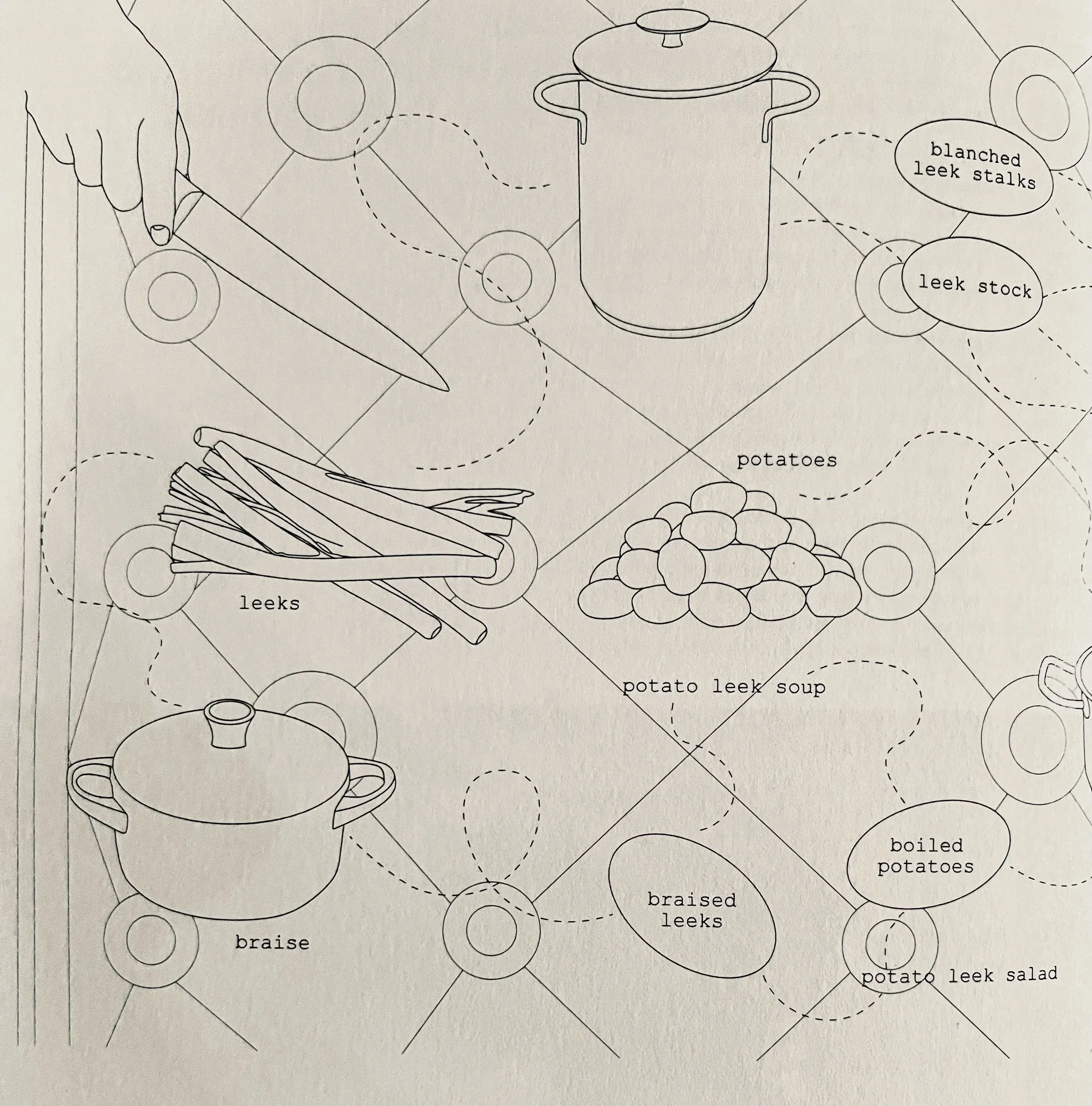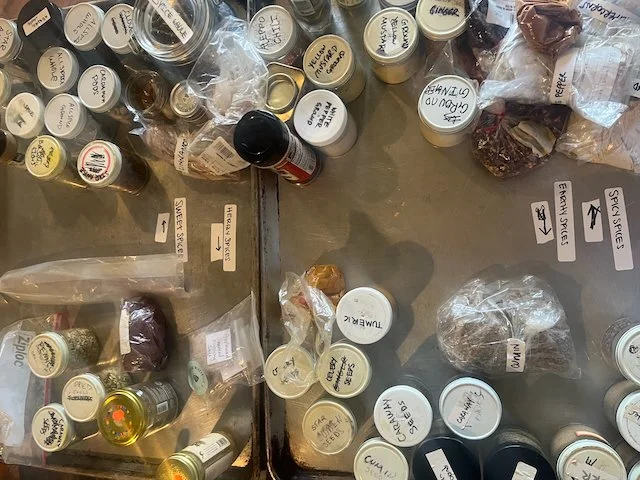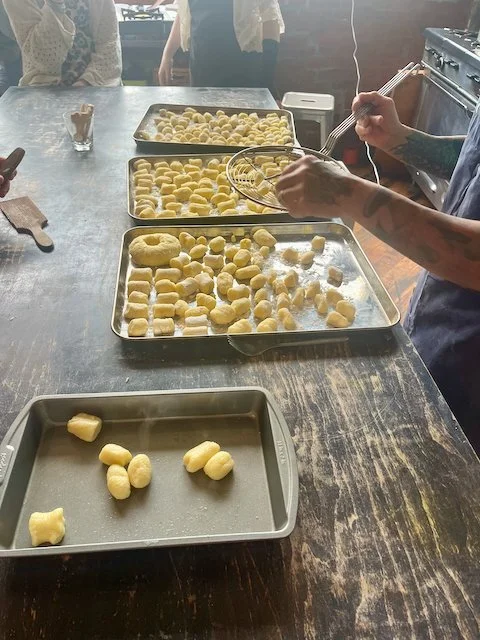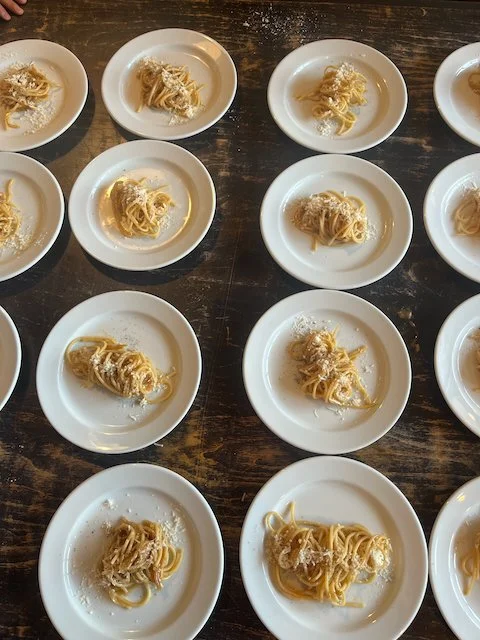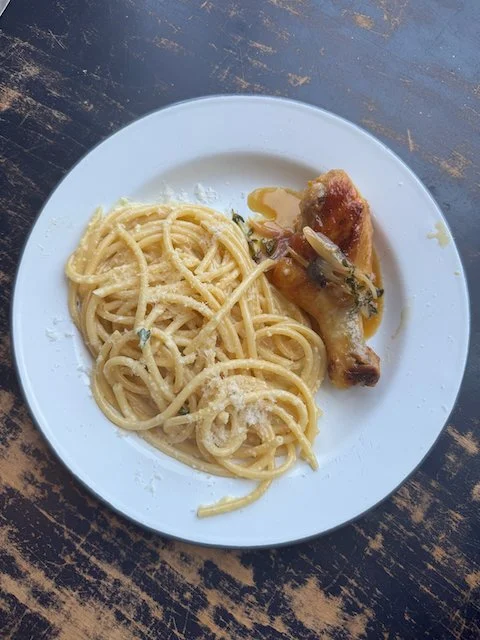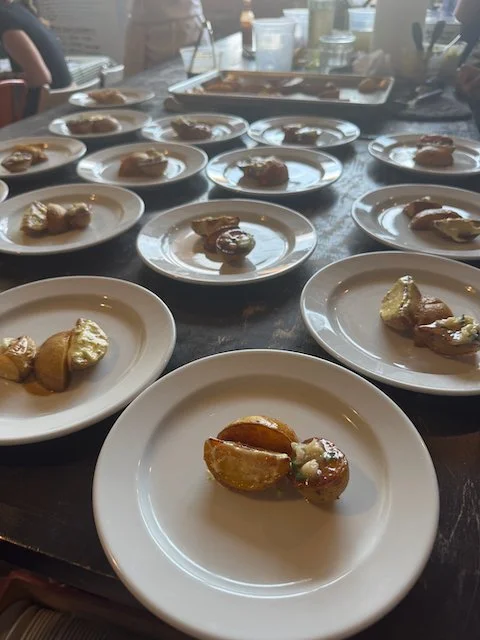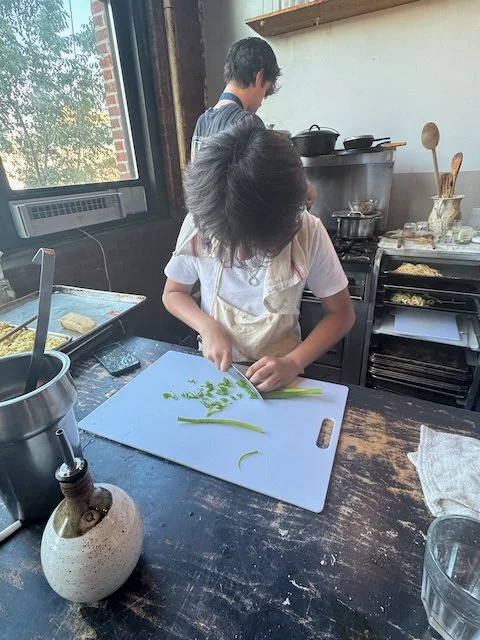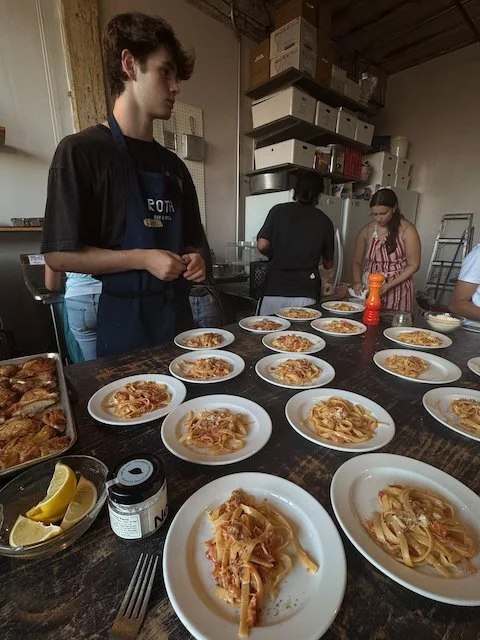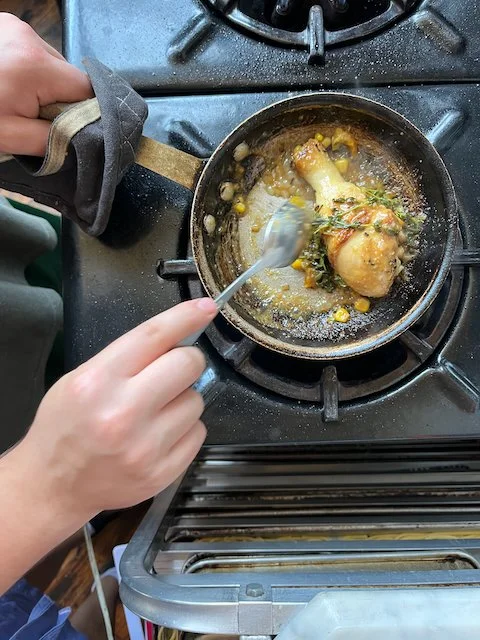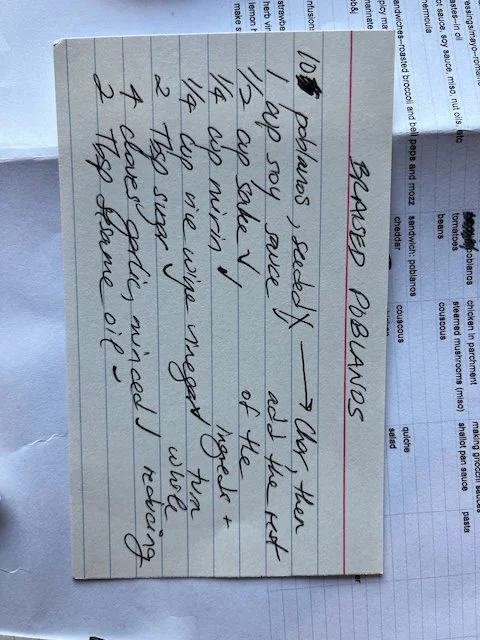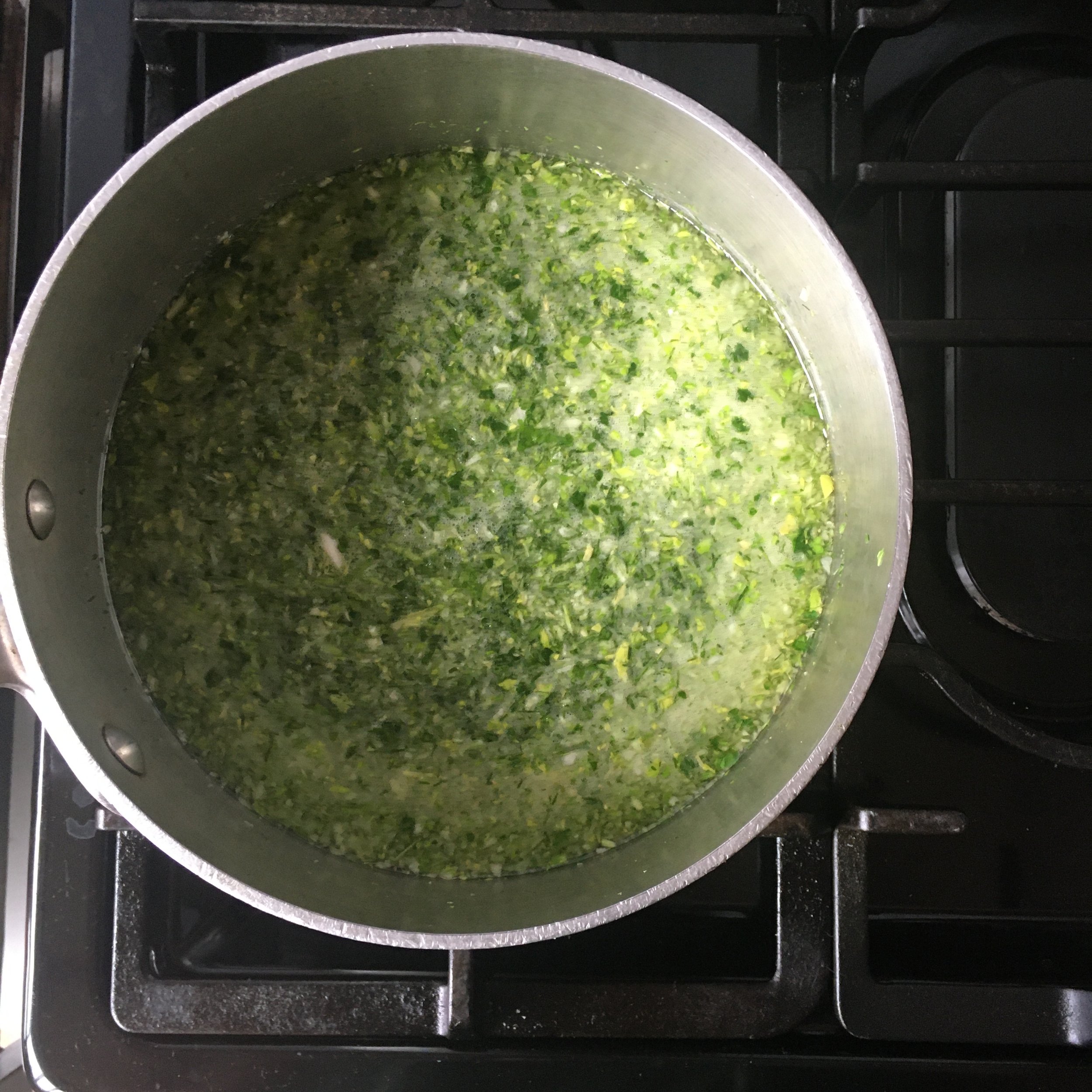Of all the packaged, shelf-stable broths, vegetable is the worst. Orange-colored with a tinny smell, this stock is hardly suited to carrot soup, and definitely wrong for the green stalks and leaves of spring.
But unless you want to forego soups for the season, and miss opportunities to make light, vibrant sauces, you'll want to have a stock that extends the flavors of what currently grows from the ground.
Enter Quick Spring Stock. Spring stock is light, vegetal, and versatile. It is made with scraps and peels, that, because they are minced in the food processor, ready cook in 10 minutes.
You can enrich the broth with grated Parmesan cheese, heavy cream or sour cream, a dollop of pesto, fresh ginger and an egg yolk, and much more. Add to this, quickly blanched English peas, slivered asparagus, and shelled and peeled fava beans. Top with a handful of fresh herbs.
Quick Spring Stock
from The Nimble Cook by Ronna Welsh
My favorite “otherwise, trash“ recipe is for a five-minute stock made from the scraps of green and white vegetables. Alone, it is slightly acidic and tastes a little grassy. But in soups like Roasted Cucumber and Buttermilk Soup (page 128), and Braised Celeriac Soup (page 171) and in risotto with Herb-Infused Butter (page 325), it is elegant. It exposes boxed vegetable stock for the food-colored sham it is.
This is likely the only “stock” you can make in minutes. In fact, if you cook it much beyond the simmer, you risk dulling its bright flavors.
Be precise about preparing your ingredients. A little white pith from the lemon rind or a few extra dark green celery leaves can turn the stock too bitter. If you have more vegetable tops and stems than you need for the stock, save some for Quick Spring-Stock Citronette (page 89).
Makes about 6 cups
1 cup roughly chopped fennel stalks and fronds
½ cup roughly chopped parsley stems
1 cup roughly chopped celery tops, ends, and leaves (not including any dark leaves)
Zest of 1 lemon, removed in strips with a vegetable peeler
1 small onion wedge, chopped
6 cups water
2 tablespoons white wine vinegar
4 garlic cloves, unpeeled but roughly chopped
½ teaspoon coarse kosher salt
Put the fennel, parsley stems, celery, lemon zest, and onion in a food processor. Pulse until finely ground. Transfer to a medium saucepan; do not wash the processor bowl. Add the water and vinegar to the pan and turn the heat to high. Finely chop the garlic in the food processor.
Monitor the stock closely as it nears a simmer. As the water heats up, the herbs that touch the side of the pot will begin to dull in color. When this happens, remove the pot from the heat and immediately strain the stock. Add the garlic while the stock is still very hot. Let cool completely, then strain once more. Add the salt. Store in the refrigerator in a covered container for up to 5 days or freeze for up to 3 months.




